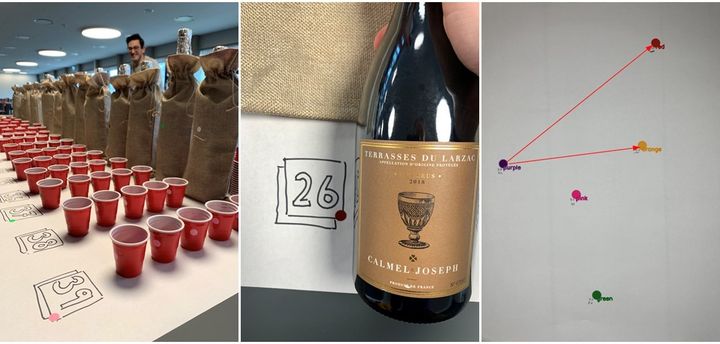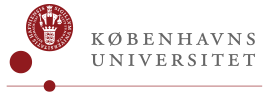Researchers have taught an algorithm to 'taste'
Incorporating human tastes into artificial intelligence makes it easier for wine buyers thirsting for the right wine. Researchers at the University of Copenhagen’s Pioneer Centre for AI have shown that AI can accurately predict individual wine preferences. The researchers expect that nourishing machines with human sensory experiences will continue to grow.

For non-connoisseurs, picking out a bottle of wine can be challenging when scanning an array of unfamiliar labels on the shop shelf. What does it taste like? What was the last one I bought that tasted so good?
Here, wine apps like Vivino, Hello Vino, Wine Searcher and a host of others can help. Apps like these let wine buyers scan bottle labels and get information about a particular wine and read the reviews of others. These apps build upon artificially intelligent algorithms.
Now, scientists from the Technical University of Denmark (DTU), the University of Copenhagen and Caltech have shown that you can add a new parameter to the algorithms that makes it easier to find a precise match for your own taste buds: Namely, people's impressions of flavour.
"We have demonstrated that, by feeding an algorithm with data consisting of people's flavour impressions, the algorithm can make more accurate predictions of what kind of wine we individually prefer," says Thoranna Bender, a graduate student at DTU who conducted the study under the auspices of the Pioneer Centre for AI at the University of Copenhagen.
More accurate predictions of people's favourite wines
The researchers held wine tastings during which 256 participants were asked to arrange shot-sized cups of different wines on a piece of A3 paper based upon which wines they thought tasted most similarly. The greater the distance between the cups, the greater the difference in their flavour. The method is widely used in consumer tests. The researchers then digitized the points on the sheets of paper by photographing them.
The data collected from the wine tastings was then combined with hundreds of thousands of wine labels and user reviews provided to the researchers by Vivino, a global wine app and marketplace. Next, the researchers developed an algorithm based on the enormous data set.
"The dimension of flavour that we created in the model provides us with information about which wines are similar in taste and which are not. So, for example, I can stand with my favourite bottle of wine and say: I would like to know which wine is most similar to it in taste – or both in taste and price," says Thoranna Bender.
Professor and co-author Serge Belongie from the Department of Computer Science, who heads the Pioneer Centre for AI at the University of Copenhagen, adds:
"We can see that when the algorithm combines the data from wine labels and reviews with the data from the wine tastings, it makes more accurate predictions of people's wine preferences than when it only uses the traditional types of data in the form of images and text. So, teaching machines to use human sensory experiences results in better algorithms that benefit the user."
Can also be used for beer and coffee
According to Serge Belongie, there is a growing trend in machine learning of using so-called multimodal data, which usually consists of a combination of images, text and sound. Using taste or other sensory inputs as data sources is entirely new. And it has great potential – e.g., in the food sector. Belongie states:
"Understanding taste is a key aspect of food science and essential for achieving healthy, sustainable food production. But the use of AI in this context remains very much in its infancy. This project shows the power of using human-based inputs in artificial intelligence, and I predict that the results will spur more research at the intersection of food science and AI."
Thoranna Bender points out that the researchers’ method can easily be transferred to other types of food and drink as well:
"We’ve chosen wine as a case, but the same method can just as well be applied to beer and coffee. For example, the approach can be used to recommend products and perhaps even food recipes to people. And if we can better understand the taste similarities in food, we can also use it in the healthcare sector to put together meals that meet with the tastes and nutritional needs of patients. It might even be used to develop foods tailored to different taste profiles."
The researchers have published their data on an open server and can be used for free.
"We hope that someone out there will want to build upon our data. I've already fielded requests from people who have additional data that they would like to include in our dataset. I think that's really cool," concludes Thoranna Bender.

ABOUT THE STUDY
- The researchers' dataset is available on the project website.
- The research article about the project was recorded at the NeurIPS 2023 conference and is based on Thoranna Bender's thesis, which she wrote while affiliated with the University of Copenhagen’s Pioneer Centre for AI.
- The authors behind the study are: Thoranna Bender, Simon Moe Sørensen, Grethe Hyldig, Søren Hauberg and Frederik Warburg from the Technical University of Denmark (DTU); Alireza Kashani from Vivino; K. Eldjarn Hjørleifsson from the California Institute of Technology (Caltech) and Serge Belongie from the University of Copenhagen.
- The research project was conducted in collaboration with Vivino.
- The research is supported by the Danish Data Science Academy (DDSA) and the Pioneer Centre for AI.
Keywords
Contacts
Thoranna Bender
Master's student
Technical University of Denmark (DTU)
thorannabender@gmail.com
+45 50 23 04 63
Serge Belongie
Professor
Pioneer Centre for AI / Department of Computer Science
University of Copenhagen
sjb@aicentre.dk
+45 93 58 87 86
Maria Hornbek
Journalist
Faculty of Science
University of Copenhagen
maho@science.ku.dk
+45 22 95 42 83
Images
Links
ABOUT THE FACULTY OF SCIENCE
The Faculty of Science at the University of Copenhagen – or SCIENCE – is Denmark's largest science research and education institution.
The Faculty's most important task is to contribute to solving the major challenges facing the rapidly changing world with increased pressure on, among other things, natural resources and significant climate change, both nationally and globally.
Subscribe to releases from Københavns Universitet
Subscribe to all the latest releases from Københavns Universitet by registering your e-mail address below. You can unsubscribe at any time.
Latest releases from Københavns Universitet
Fra Stevns til Månen: Dansk-ledet rummission skal kortlægge Månens overflade17.12.2025 06:00:00 CET | Pressemeddelelse
Københavns Universitet skal stå i spidsen for den første danske månemission. Missionen skal kortlægge Månens overflade i hidtil uset detaljegrad, som skal gøre det sikkert at lande og etablere baser på Månen i fremtiden.
Your Christmas decorations may be hiding a tiny bit of badger and toad16.12.2025 09:27:05 CET | Press release
Researchers at the University of Copenhagen have discovered that moss acts as a natural trap for environmental DNA. This discovery opens the door to using moss as a simple, gentle and inexpensive method of monitoring biodiversity – from birds and mammals to fungi, insects and microbes.
Din juledekoration gemmer måske på en lillebitte smule grævling og skrubtudse16.12.2025 09:17:58 CET | Pressemeddelelse
Forskere fra Københavns Universitet har opdaget, at mos fungerer som en DNA-fælde i naturen. Og den opdagelse åbner for mos som en enkel, billig og skånsom metode til at holde øje med biodiversiteten – fra fugle og pattedyr til svampe, insekter og mikrober.
Forskere genopliver gamle ærtesorter i enorm frøsamling: ”Et uudnyttet guldkammer til fremtiden”15.12.2025 10:29:09 CET | Pressemeddelelse
Med en ny AI-metode har forskere fra Københavns Universitet genopdaget 51 gamle ærtesorter, som ikke længere bruges i landbruget, men som kan vise sig lovende til produktion af plantebaserede fødevarer. Metoden er en genvej til at finde nye ressourcer i de grønne skatkamre, som genbankers enorme frøsamlinger udgør.
Fermentering gør havets grøntsager mere spiselige5.12.2025 06:18:59 CET | Pressemeddelelse
Tang har længe været hyldet som en bæredygtig superingrediens – men dens “fiskede” smag er en barriere for mange vestlige forbrugere. Nu viser et nyt studie fra Københavns Universitet, at fermentering med mælkesyrebakterier kan være nøglen til at få tangen til at glide ned.
In our pressroom you can read all our latest releases, find our press contacts, images, documents and other relevant information about us.
Visit our pressroom

